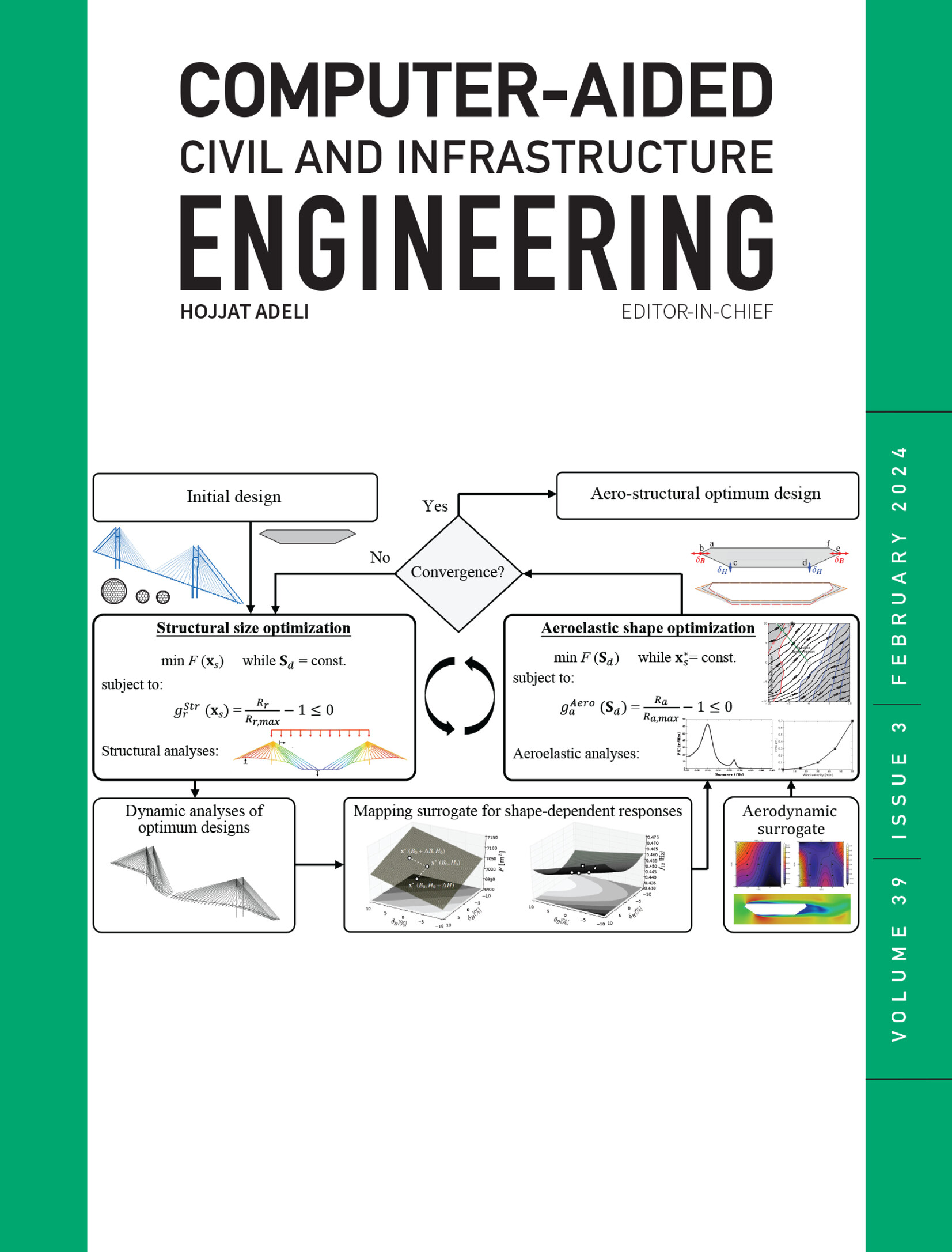基于领域自适应自监督学习的钢隧道腐蚀检测与三维建筑信息模型映射
IF 9.1
1区 工程技术
Q1 COMPUTER SCIENCE, INTERDISCIPLINARY APPLICATIONS
引用次数: 0
摘要
隧道基础设施中钢材腐蚀的准确检测和定位仍然是一项重大挑战,特别是在光照变化、可达性有限以及真实检测场景中常见的视觉域偏移的情况下。本研究提出了一种新的集成框架,通过结合自监督深度学习、基于图像的三维重建和基于建筑信息模型(BIM)的空间损伤定位,实现隧道检测的自动化。我们方法的核心是基于segformer的两阶段域适应模型,该模型利用伪标记和置信度掩蔽来提高视觉上不同环境的泛化,而不需要大量的标记数据。与传统的监督方法不同,我们的模型实现了0.81的平均交联(mIoU)和0.77的F1分数,表现出优异的鲁棒性和泛化性。通过无人机和iphone捕获的图像进行处理,生成密集的点云,用于构建隧道结构的三维(3D) BIM模型。使用自定义坐标估计方法在BIM坐标系中检测并精确定位腐蚀区域。最终的产出被编译成一个结构化的数据库,用于无缝的数字资产管理。总体而言,所提出的框架提供了一种可扩展、经济高效且适应性强的解决方案,可显着减少人工劳动和检查时间,具有在基础设施状态监测和数字资产管理中广泛部署的强大潜力。本文章由计算机程序翻译,如有差异,请以英文原文为准。
Domain-adaptive self-supervised learning for corrosion detection and 3D building information model mapping in steel tunnels
Accurate detection and localization of steel corrosion in tunnel infrastructure remains a major challenge, particularly under conditions of variable lighting, limited accessibility, and visual domain shifts common in real-world inspection scenarios. This study presents a novel integrated framework that automates tunnel inspection by combining self-supervised deep learning, image-based three-dimensional reconstruction, and building information modeling (BIM)-based spatial damage localization. At the core of our approach is a Segformer-based, two-stage domain adaptation model, which leverages pseudo-labeling and confidence masking to improve generalization across visually diverse environments without requiring extensive labeled data. Unlike traditional supervised methods, our model achieves a mean intersection over union (mIoU) of 0.81 and an F1 score of 0.77, demonstrating superior robustness and generalization. Images captured via unmanned aerial vehicles and iPhones were processed to generate a dense point cloud, which was used to construct a three-dimensional (3D) BIM model of the tunnel structure. Corrosion regions were detected and precisely localized within the BIM coordinate system using a custom coordinate estimation method. The final outputs were compiled into a structured database for seamless digital asset management. Overall, the proposed framework offers a scalable, cost-effective, and highly adaptable solution that significantly reduces manual labor and inspection time, with strong potential for broader deployment in infrastructure condition monitoring and digital asset management.
求助全文
通过发布文献求助,成功后即可免费获取论文全文。
去求助
来源期刊
CiteScore
17.60
自引率
19.80%
发文量
146
审稿时长
1 months
期刊介绍:
Computer-Aided Civil and Infrastructure Engineering stands as a scholarly, peer-reviewed archival journal, serving as a vital link between advancements in computer technology and civil and infrastructure engineering. The journal serves as a distinctive platform for the publication of original articles, spotlighting novel computational techniques and inventive applications of computers. Specifically, it concentrates on recent progress in computer and information technologies, fostering the development and application of emerging computing paradigms.
Encompassing a broad scope, the journal addresses bridge, construction, environmental, highway, geotechnical, structural, transportation, and water resources engineering. It extends its reach to the management of infrastructure systems, covering domains such as highways, bridges, pavements, airports, and utilities. The journal delves into areas like artificial intelligence, cognitive modeling, concurrent engineering, database management, distributed computing, evolutionary computing, fuzzy logic, genetic algorithms, geometric modeling, internet-based technologies, knowledge discovery and engineering, machine learning, mobile computing, multimedia technologies, networking, neural network computing, optimization and search, parallel processing, robotics, smart structures, software engineering, virtual reality, and visualization techniques.

 求助内容:
求助内容: 应助结果提醒方式:
应助结果提醒方式:


